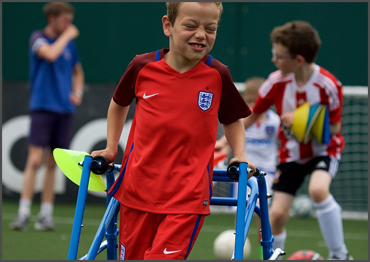
Dr. Dibyendu Chakrabarty
MBBS (Cal.) DCH (Cal.) MD (Pediatrics) International Fellows of American Academy of Pediatrics (USA)

MBBS (Cal.) DCH (Cal.) MD (Pediatrics) International Fellows of American Academy of Pediatrics (USA)
What are the signs of Cerebral Palsy in a Baby?
• Low muscle tone (baby feels 'floppy' when picked up)
• Unable to hold up his/her own head while lying on their stomach or in a supported sitting position.
• Muscle spasms or feeling stiff.
• Poor muscle control, reflexes and posture.
• Delayed development (can't sit up or independently roll over by 6 months)
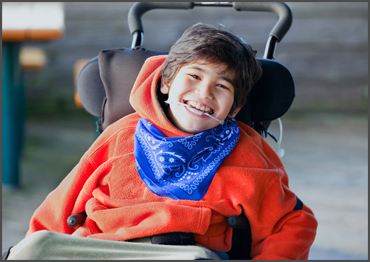
How do you diagnose Cerebral Palsy in Babies?
There is no test that confirms or rules out Cerebral Palsy. In severe cases, thechild may be diagnosed soon after birth, but for the majority, diagnosis can be made in the first two years. For those with milder symptoms, a diagnosis may not be rendered until the brain is fully developed at three to five years of age.
What causes Cerebral Palsy in Babies?
The cause of Cerebral Palsy is a brain injury or brain malformation that occurs while the brain is developing — before, during, or after birth. As a result of the brain damage during brain development a child's muscle control, muscle coordination, muscle tone, reflex, posture and balance can be affected.
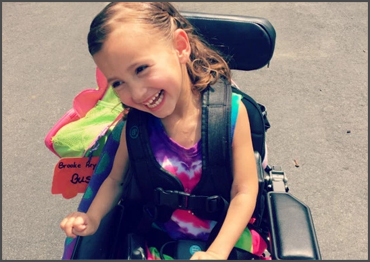
Can children walk with Cerebral Palsy?
Some kids with CP use wheelchairs and others walk with the help of crutches or braces. In some cases, a kid's speech may be affected or the person might not be able to speak at all. Cerebral palsy (say: seh-REE-brel PAWL-zee) is a condition that affects thousands of babies and children each year.
Is there a cure to Cerebral Palsy?
The first thing a parent will hear after a physician says, “Your child has Cerebral Palsy,” will likely be the words, “At present, there is no cure.” However, the fact that there is no cure does not mean that the diagnosis is dire. Persons with Cerebral Palsy have impairment, but are considered healthy.
Who is most at risk for Cerebral Palsy?
While the potential contribution from each is limited, additional pregnancy or birth factors associated with increased cerebral palsy risk include:
• Breech births.
• Complicated labor and delivery.
• Low birth weight.
• Multiple babies.
• Premature birth.
• Rh blood type incompatibility between mother and child.
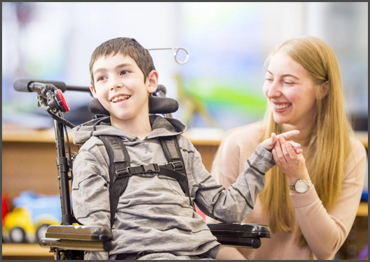
Can Cerebral Palsy go away?
The brain injury or problem that causes cerebral palsy doesn't get worse over time. But new symptoms may appear, or symptoms may change or get worse as your child gets older. This is why some babies born with cerebral palsy don't show clear signs of it right away.
Is Cerebral Palsy more common in males or females?
Cerebral palsy (CP) and related developmental disorders are more common in males than in females, but the reasons for this disparity are uncertain. Males born very preterm also appear to be more vulnerable to white matter injury and intraventricular hemorrhage than females.
What is the prognosis for a Child with Cerebral Palsy?
Cerebral Palsy Prognosis. Children with mild forms of cerebral palsy have a normal life expectancy. For example, a two year-old child with mild palsy has a 99% chance of living to the age of 20, compared with a patient who has severe disease, where the figure may be as low as 40%
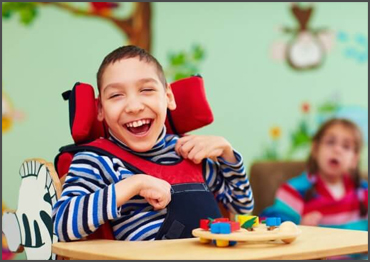
Can you prevent Cerebral Palsy?
CP related to genetics is not preventable. However, there are actions people can take before and during pregnancy, as well as after birth.
What is the life expectancy of a Child with Cerebral Palsy?
Although there have been no general studies of life expectancy in people with cerebral palsy, most children affected by CP live between 30 and 70 years, depending on the severity of the condition. In general, a child with a mild case of CP usually lives longer than a child with mobility and intellectual limitations.
